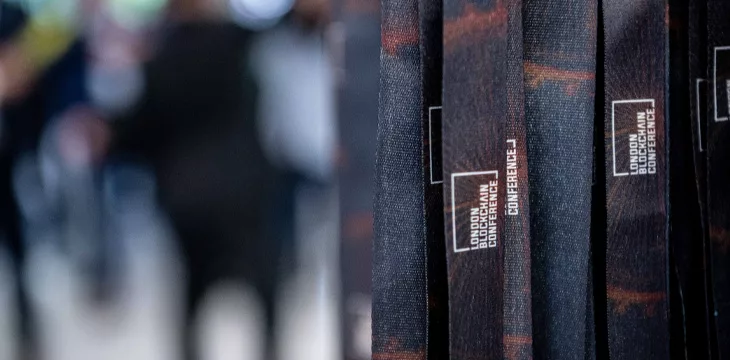The NFT space will not grow if we continue to cater to speculators

When I got involved in NFTs in 2018, it was an extremely different industry. There was almost no venture capital. At the time, the NFT space felt different from the rest of crypto. There was a sense that NFTs were the real use case that crypto needed – not just something to speculate on like ICOs, or a tool to make speculation easier like DeFi.
Fast forward to today and things couldn’t be more different. I can’t pinpoint exactly when it happened, but around mid-2021, NFTs completely merged with the rest of the crypto world. They became just another thing for crypto people to speculate on. Many people who had helped create the ICO bubble turned to NFTs.
Today, the majority of participants in NFT’s art and collectibles are “speculators”. Here I define a speculator as someone whose primary motivation for participating in the NFT world is the desire to make money. Of course, many people participate in the NFT space for reasons other than making money, but they are in the minority.
Opinion data from various sources reveals that speculators make up the majority of participants in the NFT space. It also shows in the types of products and services that become popular. For example, Blur didn’t become the hot new thing because they got a new group of people interested in NFTs or because they figured out a new use case for NFT technology. They rose to prominence by cutting fees to zero and paying people to use their product, features clearly aimed at speculators.
There is nothing inherently wrong with speculation. But that prevents the collectible NFT world from capturing what is a much bigger opportunity – the opportunity for luxury goods.
Speculators prevent the room from fulfilling its potential
An NFT market with majority speculators is a local maximum for NFTs. It is a trap the NFT space is caught in.
Because most market participants are speculators, the people who create the industry’s future—marketplaces, creators, and investors—have an incentive to create products that appeal to speculators.
But speculators are a unique type of customer. Products made for speculators will not appeal to any other type of customer. In fact, they are likely to actively drive away the customers most important to the future of NFTs (more on this in the next section).
This is the basic form of the trap the NFT space finds itself in: Builders make products for speculators because speculators are the largest group of industry participants right now. But those products just appeal to speculators and keep out the most important potential customers, which means that the NFT space cannot grow.
The problem with collectibles as an investable asset class
Collectibles are a fun, sexy industry. But studying the industry, which is built on the same first principles as the NFT collector industry, shows that they have historically struggled as an investment compared to other opportunities.
Let’s take art as an example. Art is by far the largest and most important type of collectible in the world. The global art market was valued at $65.1 billion in 2021, and the total estimated value of all art and collectibles is an estimated $1.7 trillion in 2020. It is expected to grow to $2.12 trillion by 2023.
However, a look at the art fund industry shows that this has not led to much investment capital being allocated to the physical asset class for art. Money invested in art funds went from $2.1 billion in 2012 to a paltry $830 million in 2017. By contrast, stocks are an asset class of roughly $105 trillion, and the amount of money invested in mutual funds in the US was approximately $18.75 trillion in 2017. This significant difference shows how wildly unpopular investing in collectibles is compared to investing in stocks.
If so, who are the collectors who own the $1.7 trillion worth of art, and why do they own art if not for investment purposes? In short, they are people motivated by passion. The most common primary motivation of art collectors is the “emotional benefit” they get from art. Many also have the value of the art they buy as a consideration, but the data shows that a financial motivation is far less common than in the NFT area. This insight into the psychology of art collectors directly explains why art is a difficult investment.
Why isn’t more money allocated to collectibles as an asset class?
Some say it’s because of a lack of liquidity, the unregulated nature of collectibles, or the inaccessibility of the market. But those problems are symptoms of collectibles are difficult investment assets, not causes.
Collectibles are rare investment products
Collectibles are difficult as investment assets because of a paradox at the heart of investing in collectibles – specifically, the fact that the value of a collectible comes from the emotional attachment the owner(s) feel to it and nothing else.
This is what creates a fundamental paradox when an investor with explicit return goals owns a collector’s item. An investor who owns a collectible cannot be primarily motivated by their emotional attachment to it because they have a fiduciary duty to view it as an investment.
The “foundations” of an artist can be approximated by measuring the emotional attachment that all collectors of that artist have together. This means that simply by owning a collectible, an investor makes the fundamental value of that artist worse by reducing the overall amount of emotional attachment an artist’s collector base has to their work.
Put another way – if the supply of a particular collectible is mainly held by people who really love it, it will maintain its value. But if it is mainly held by people trying to sell it for more money, it will lose its value.
This is the fundamental reason why investing in collectibles is so strange and complicated. Just by opening an art fund, promising returns to investors and buying some art, you risk making the basic art you buy for that fund worse.
This is also why the biggest collectibles industries, especially the art world, intentionally keep flippers out. They know that an artist’s paintings owned primarily by flippers will be disastrous for the value of the artist’s work.
It is a much better adapted type that the industry should focus on
Does this mean that NFTs and other collectibles can never be big or impactful? Absolutely not.
Collectibles companies have become big and powerful by convincing more and more people to fall in love with the products they make rather than by convincing people to see their products primarily as investments.
Handbags, like physical art, are another case study for collectibles that we can use to learn about the NFT world. They are not popular because they are a financial instrument. They are popular because their creators have become incredibly good at selling the “dream”. Buying a $10,000 purse signals to the world that you are high status and wealthy. This is the basic appeal of the “luxury goods” type of customer.
The luxury goods customer type is basically the exact opposite of the speculator customer type. They are customers who buy things to signal to the world their sophistication and cultural knowledge. Many of them have all their financial needs covered, and they use the luxury goods they buy as a way to subtly show it to the world.
“The NFT industry could be much bigger if it breaks out of this local maximum and focuses on selling luxury goods rather than speculative assets.”
Duncan cock fetus
And indeed, having speculators around is likely to actively deter luxury goods customers. And all things being equal, luxury customers would probably rather own collectibles that make them part of a club of people like them, rather than collectibles that make them part of a “let’s get rich by flipping this asset” club .
The NFT industry could become much bigger if it breaks out of this local maximum and focuses on selling luxury goods instead of speculative assets.
Back to my original point. The NFT customer base is mostly speculators, which means industry players – marketplaces, developers and investors – are encouraged to build for the speculator customer. But building for speculators won’t help you attract luxury customers. In fact, it probably actively makes it harder to do so. At best, appealing to speculators is a distraction. True luxury customers do not buy to make money. They buy because the want to signal it to the world.
It probably feels counterintuitive to some reading this article, but as I’ve outlined, the overwhelming evidence from the physical collectibles industry is that selling collectibles as luxury goods is a far bigger business than selling collectibles as investments. This means that the NFT space can become much larger if industrial builders shift their focus to luxury goods.
A tough shift to make
I have come to realize that speculation is fundamentally embedded in many different parts of the NFT space. It is difficult for me to even conceptualize what the NFT industry would look like without a focus on speculators. Even the vocabulary that people usually use to discuss the industry itself needs to change.
“Really pivoting to appeal to luxury goods customers will require NFTs to slaughter many of their sacred cows.”
Duncan cock fetus
Luxury goods customers are not interested in daily fluctuations in the floor price. They don’t mind if there is no liquidity for what they buy. If it is “beneficial”, it may be a net negative for them. In short, truly pivoting to appeal to luxury goods customers would require NFT degens to slaughter many of their sacred cows.
The shift would almost certainly upset some existing NFT participants. That’s part of what makes it a trap for the industry — it’s a significant adjustment that many entrenched interests don’t want to happen.
NFTs have a number of significant material advantages over physical collectibles: guaranteed authenticity, ease of transport and storage, and unique creative possibilities. But the first principles of why NFT collectibles exist in the world are the same as the first principles of why physical collectibles exist in the world. This means that the fundamental benefits of NFTs cannot be fully realized while the majority of NFT collectors are speculators.
Making this shift is much easier said than done. But I predict that the builders, marketplaces, and NFT innovators who aren’t afraid to rip off the bandaid and make the leap to a completely different kind of customer will be the ones who are most successful in the long run.
Duncan Cock Foster co-founded Nifty Gateway in 2018 with his twin brother, Griffin Cock Foster. Nifty Gateway pioneered many important parts of the NFT world, including crypto art drops, open issues and more. Nifty Gateway was acquired by Gemini and Duncan recently left to start another company.
























